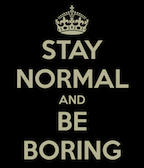Drew’s conversation with Paul Gottsegen, Executive VP and Chief Marketing/Strategy Officer of Mindtree, will provide new CMOs with a step-by-step playbook for creating the best marketing organization structure possible. Paul provides listeners with 4 best practices to follow for ultimate success in digital, content, and social marketing.
Paul explains that “I’ve learned everything by making every mistake in the book.” Don’t repeat his mistakes, learn from his experiences. Those experiences have allowed him and his team to bring in over 100,000 sales pipeline leads over the past few years. The company’s stock value has quadrupled, and Mindtree has become a globally trusted brand.
Learn from one of the industry’s best experts on this episode of Renegade Thinkers Unite. Click here to listen now!
Subscribe on Apple Podcasts – Stitcher – or Podsearch
#1: Find out what your CEO/Executive Board’s marketing expectations are
A CMO should not spend a single dollar or make a single decision until they determine what goals the company leadership team has for marketing. By having their expectations outlined ahead of time, you’ll save time, energy, and resources. Paul struggled with conveying the true importance of marketing to Mindtree’s executive board, but he summarized it by saying, “Marketing isn’t easy! If it was, everyone would be doing it in amazing ways. You just have to keep pushing good content, having great interactions, and build company credibility.” This mindset needs to be conveyed to company leaders before any of the other best practices can be implemented.
#2: Build the best marketing tech stack infrastructure you can afford
Once marketing expectations and goals are established, a CMO should focus on building the best marketing tech stack possible. Paul explains that marketing professionals should “hire and fire tech stack tools quickly; don’t just sign a longer contract for a better deal!” He goes on to explain that many organizations forget about the staffing needs that come along with every tech stack tool and that every tool should provide quality metrics. Your tech stack should always be evolving and changing to fit the needs of the company.
#3: Focus on building a competitive brand
Clear marketing expectations and having the right infrastructure then allows a CMO to focus on building a competitive, trusted global brand. Paul explains that small marketing organizations shouldn’t immediately focus on going toe-to-toe with brand 10x-20x larger than they are. That growth will come in time. However, every brand does need to focus on telling a better story that explains why YOU can solve a customer’s problem better than anyone else. Marketing can and should be about more than securing contracts. It’s about building a reputable, trusted, expert brand. All of this can be accomplished by following these 4 best practices, fully explained in the audio for this episode of Renegade Thinkers Unite.
#4: Don’t be afraid to partner with experts and empower your team
Even the CMO of Mindtree wasn’t afraid of turning to outside experts when he and his team hit a wall. There are thousands of qualified professional marketers that can provide third-party insights into your organization. Empowering your team to become experts in different areas is also immensely beneficial to a marketing organization’s structure. Specialties are great, employee silos aren’t. Your team should be just that, a team, all focusing on one common goal. This final best practice is best heard from Paul himself, so don’t miss this episode.
What You’ll Learn
- [1:38] Drew’s guest introduction and why this episode is a playbook for marketing organization structure
- [4:45] Paul’s biggest challenges as a new CMO and how he learned the best marketing lessons
- [10:50] Hidden costs to tech stacks that often go overlooked
- [13:37] How can a small B2B company develop a competitive brand?
- [17:58] Making Mindtree’s tagline, “Welcome to possible,” become reality
- [20:26] Paul’s proudest moment of marketing execution at Mindtree
- [23:57] Utilizing metrics and how to drive more leads to the sales pipeline
- [30:12] The biggest area of uncharted territory in B2B marketing
- [34:23] Paul’s 2 do’s and 1 don’t for CMOs
Connect With Paul:
- Paul’s page on the Mindtree website
- Connect with Paul on LinkedIn
- Follow Paul on Twitter
Resources & People Mentioned
- Pardot marketing automation platform
- Marketo platform
- Moz software
- Tableau business analytics software
- Ep. 75 “Best Practices for Bold Marketing Strategies, Learned from Marketo’s CMO”
Connect with Drew
- http://renegade.com/
- On LinkedIn
- On Twitter
- On Facebook
- On Instagram
